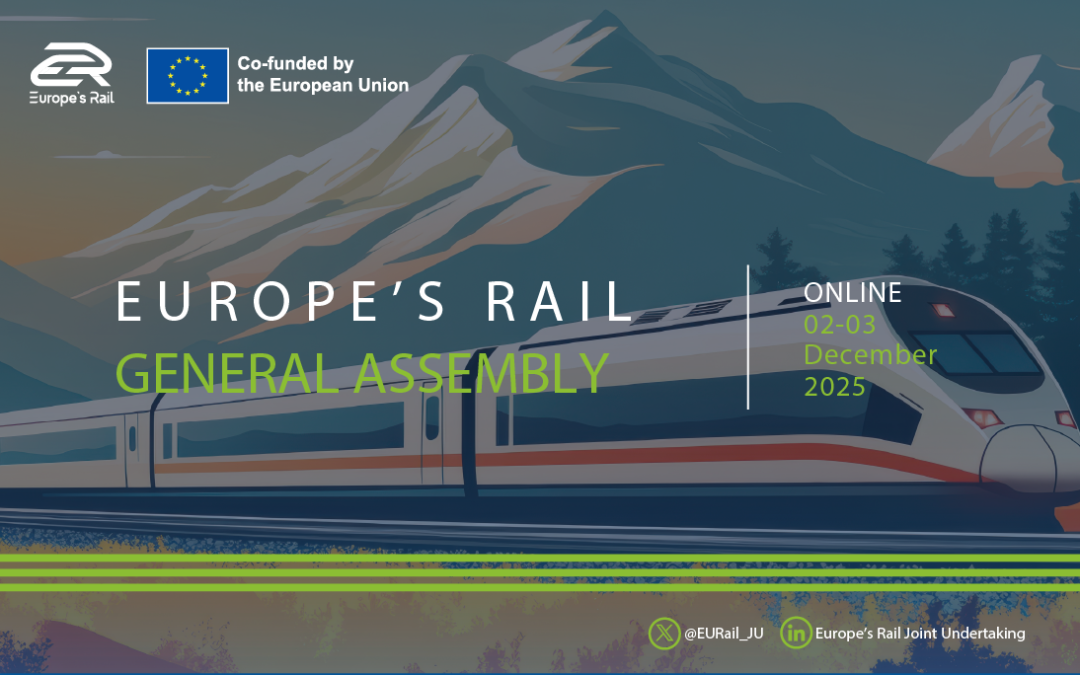On 2–3 December, the Europe's Rail General Assembly 2025 took place, providing a valuable occasion to look back at the...


Currently available work packages:
The process flow for European seamless rail freight and a future automated full digital freight train operation with all relationships must be described within its physical (such as locomotive/wagon and its subsystems) and a digital (data) layer as a foundation for the specification of the requirements of the technical enablers for a digital-rail-based logistic systems. Target operational processes for all areas in all relevant scenarios (situations/sites/locations) shall be defined.
A common approach for fully functional interoperable and homologated Digital Freight Train Operation (FDFTO) shall be ensured by means of a fully integrated reference system architecture comprising of the various technological advances and developments of the project. The system architecture shall build a foundation for all interconnected tasks: requirement management, variant management, validation tests, RAMS analysis. The work package aim is designing and harmonization of a functional reference system for the FDFTO architecture with a focus purely on functionality not on the technical solution: Both a physical reference system architecture (layout of physical entities and interfaces) and a digital reference system architecture (data and digital interface design).
Yard processes shall be highly to fully automated by introducing the DAC Level 5 capabilities. WP12 objective is to develop and deliver safe and secure automated shunting solutions ensuring functional interoperability across technologies and suppliers. Procedures in departure section such as train preparation shall be supported by trackside equipment for automatic brake & line test. Movements of shunting locomotives can be carried out automatically in dedicated areas even without ETCS with unequivocal mapping/positioning. The focus of WP12 lies in developing of novel software defined technologies aiming to embed new functionalities – not yet available – into automated yard management and yard automatization systems – both for flat and hump yards. This WP will implement the following technical enabler: 4 with the aim to reach TRL 6 – 8
The aim of WP13 is to support and coordinate WP14-21 by providing a test concept, system integration plan and holistic FDFTO assessment. The objective of WP13 is to ensure integration of the technical enablers to a functional FDFTO train and delivery of the demonstrators.
In most cases, except for “hand-over” tracks between main-line and yards, flat yards/last mile infrastructure are un- signalled areas. Automatization of these yards is hampered by crucial signalling components not having conflict-free, safe route setting and, in most cases, non-automated movement of switches. The main objective of the WP20 is to validate, implement and showcase the practical application of the developments of WP12 for an automated flat yard/last mile in a real operational environment. Enabler 4 will be addressed in this work package. (TRL6-8)
Well organized yards are essential for an excellent performance of SWL-traffic throughout Europe. The change management of operational and organizational procedures going from a non- or semi-automated environment towards a digitalized and fully automated yard area needs detailed planning; this also applies for test and demonstrator purposes, using real hump yard environment. The main Objective of WP21 is to validate, implement and showcase the practical application of the developments of WP12 for an automated hump yard in a real operational environment.
Currently available deliverables:
All deliverables, results and publications herewith provided reflects only the author's view and the EURAIL is not responsible for any use that may be made of the information it contains.